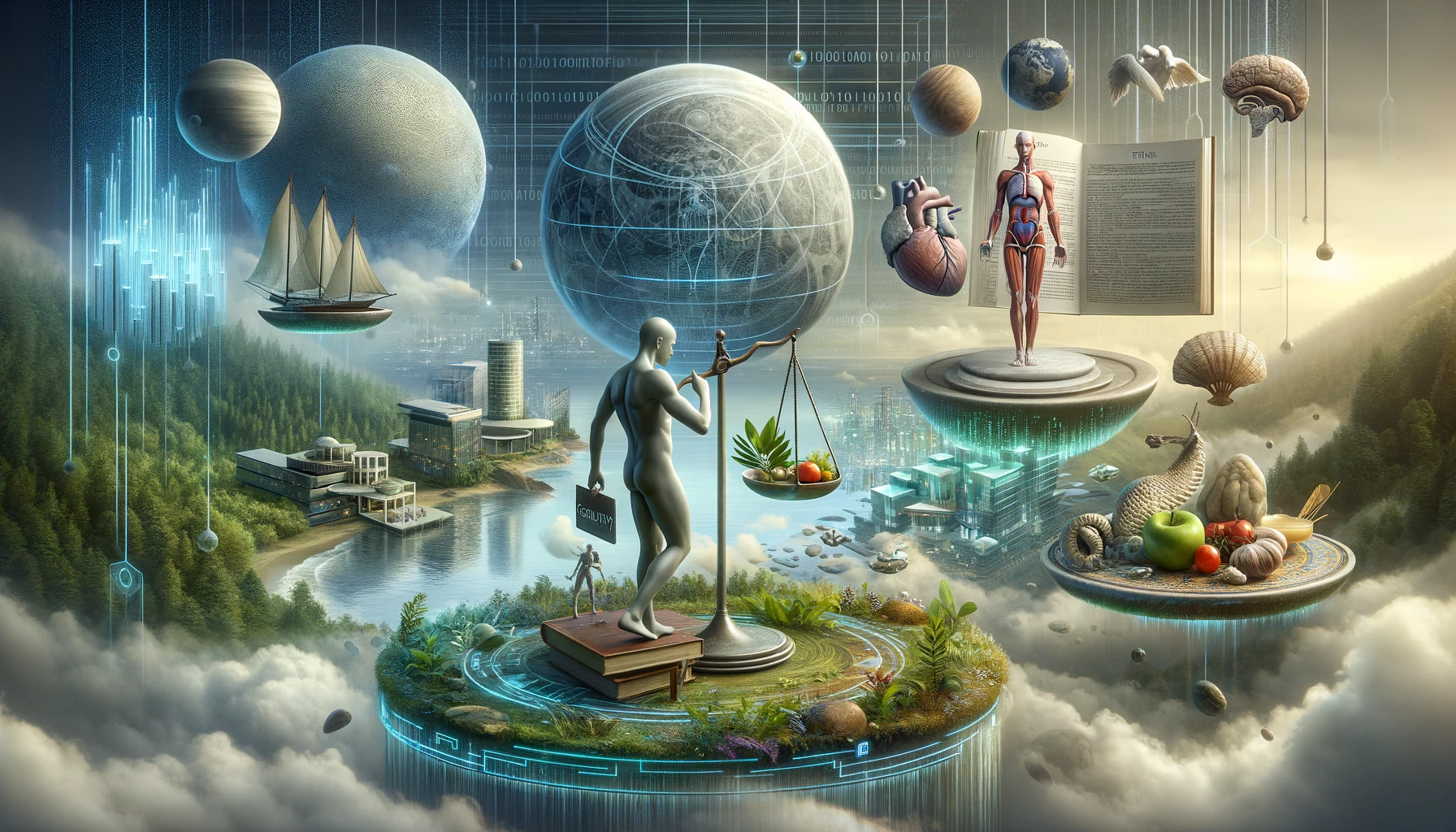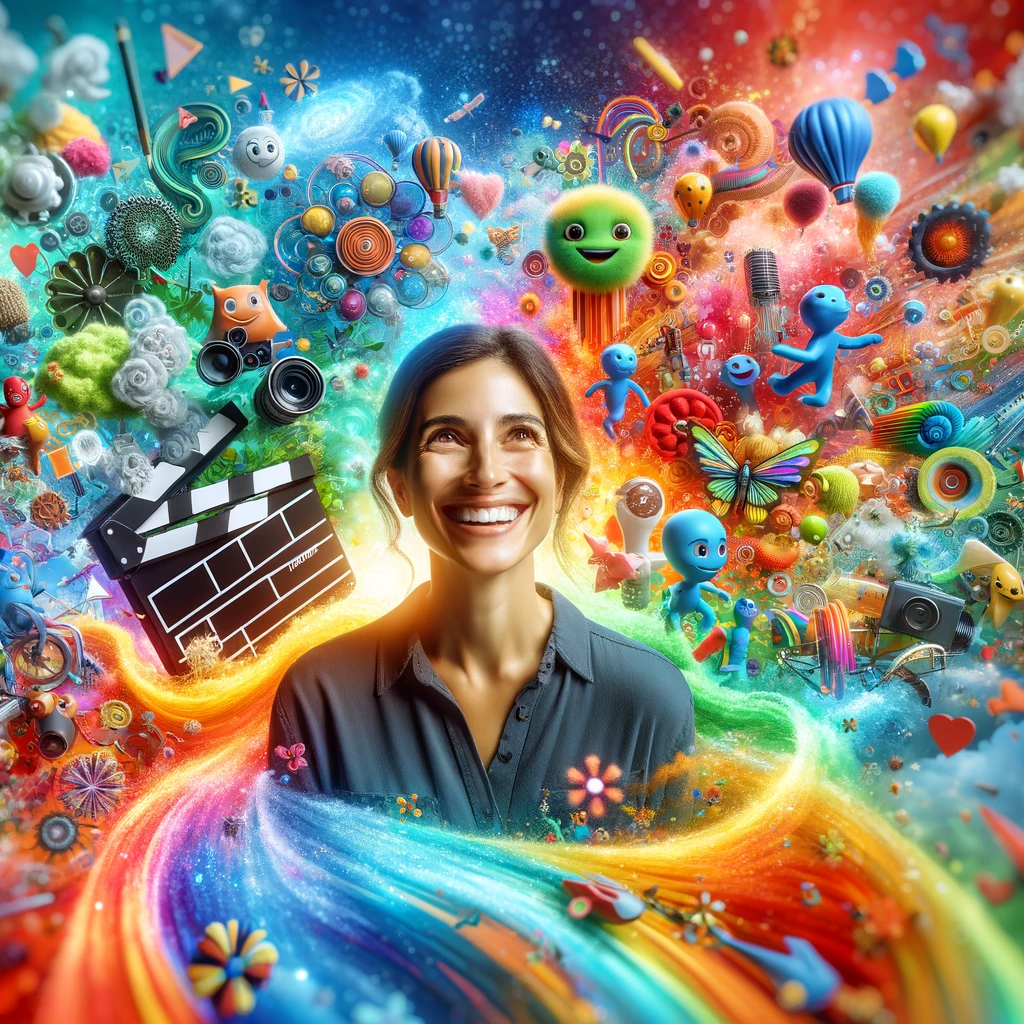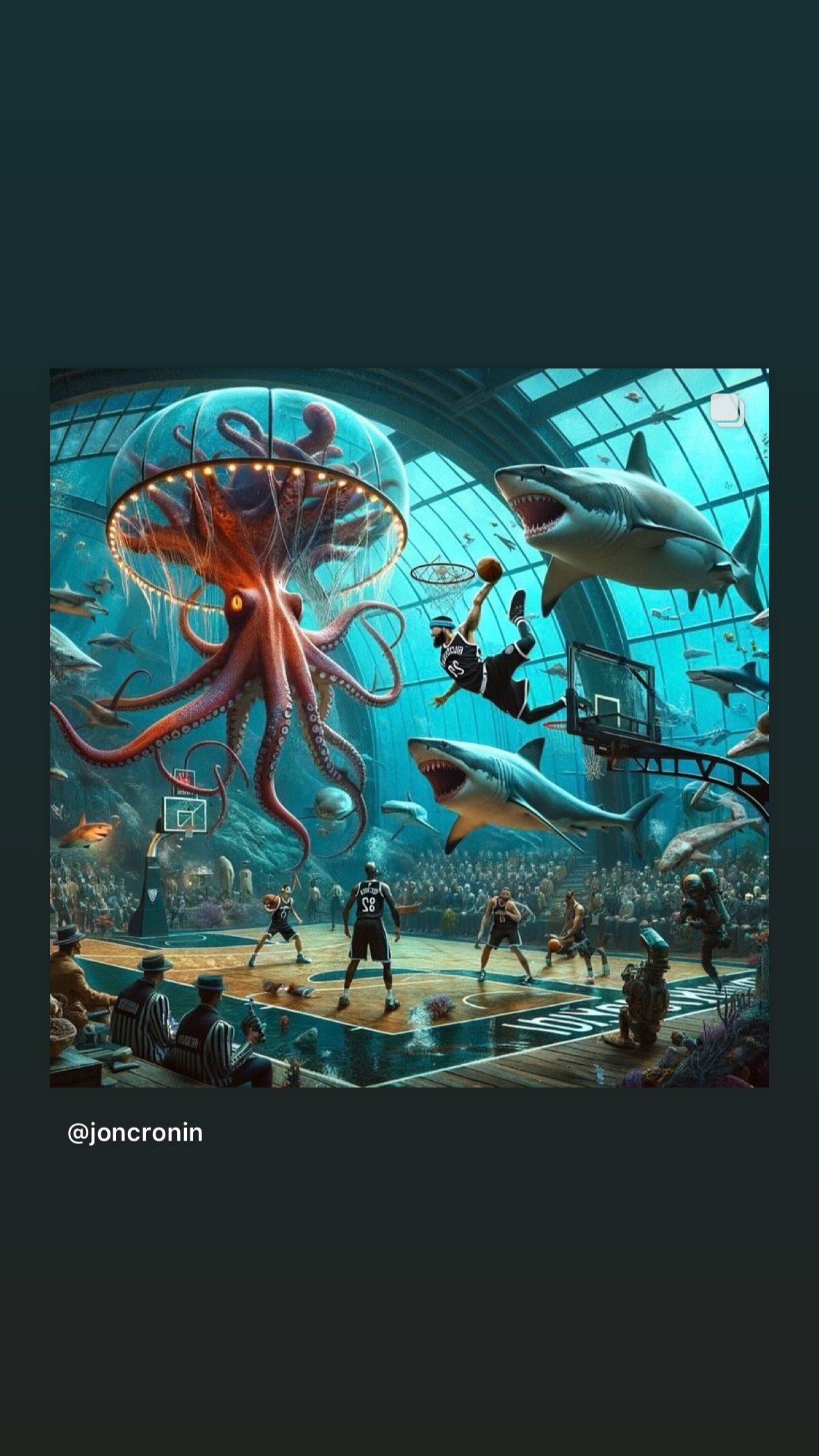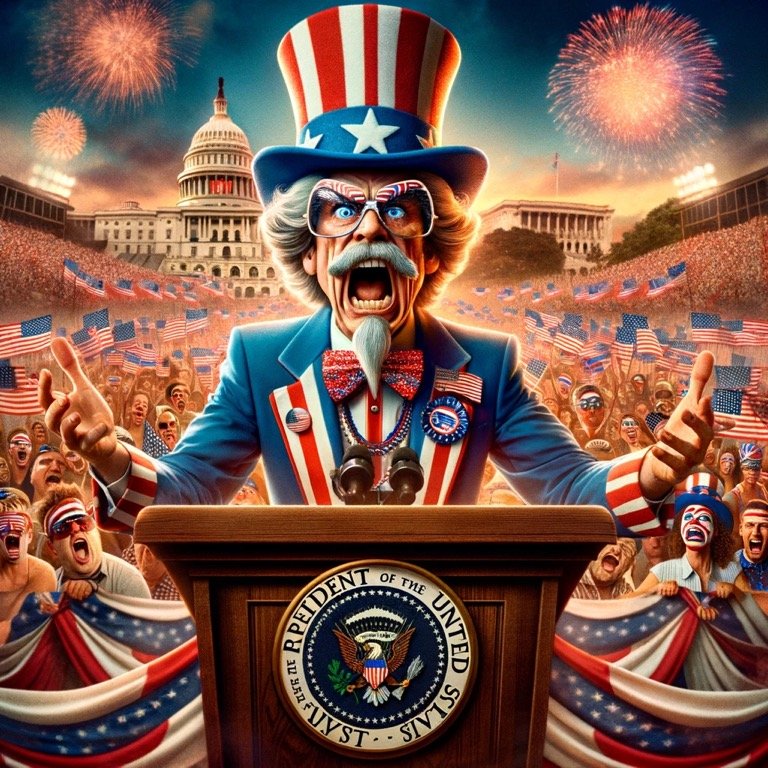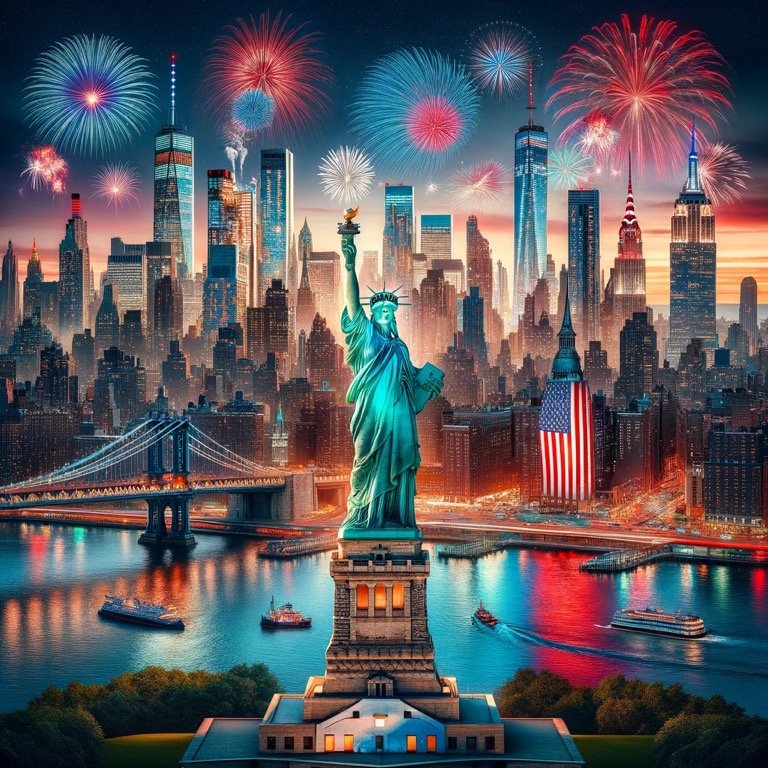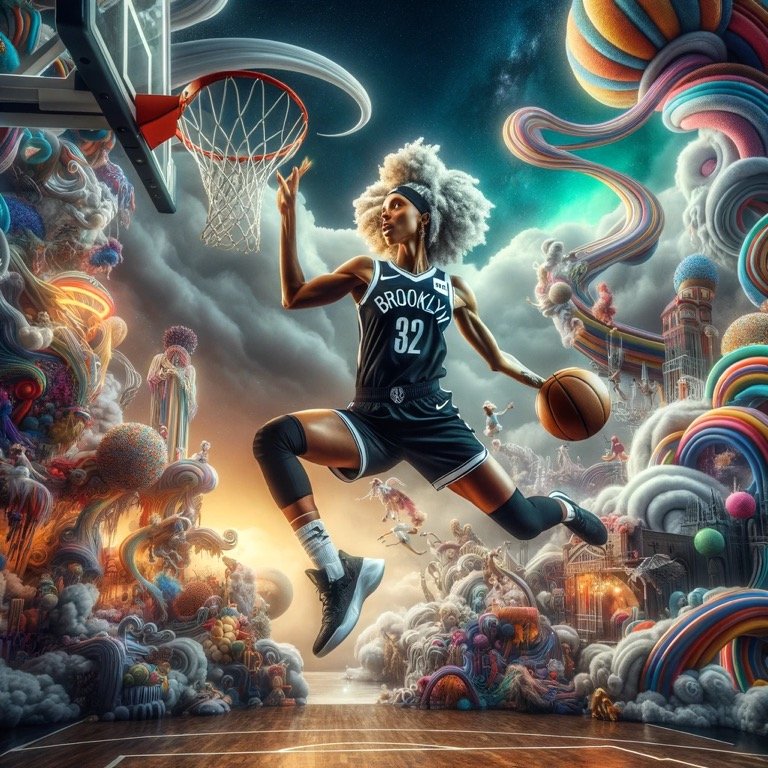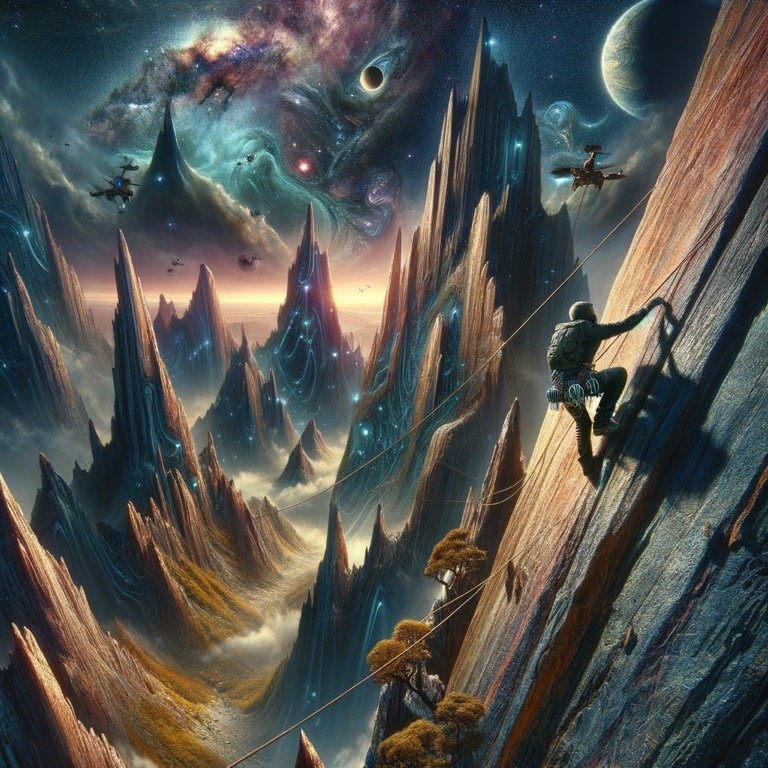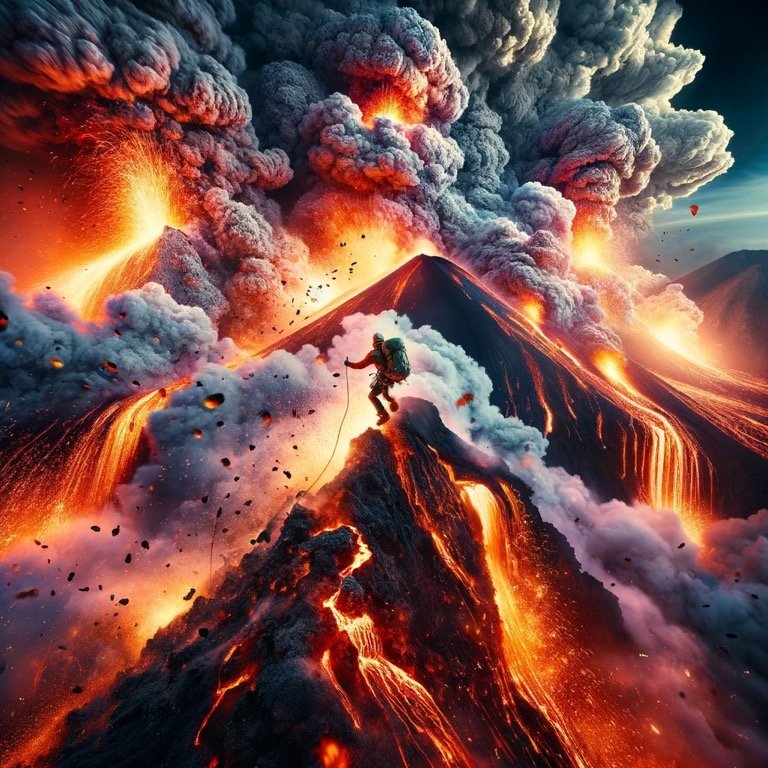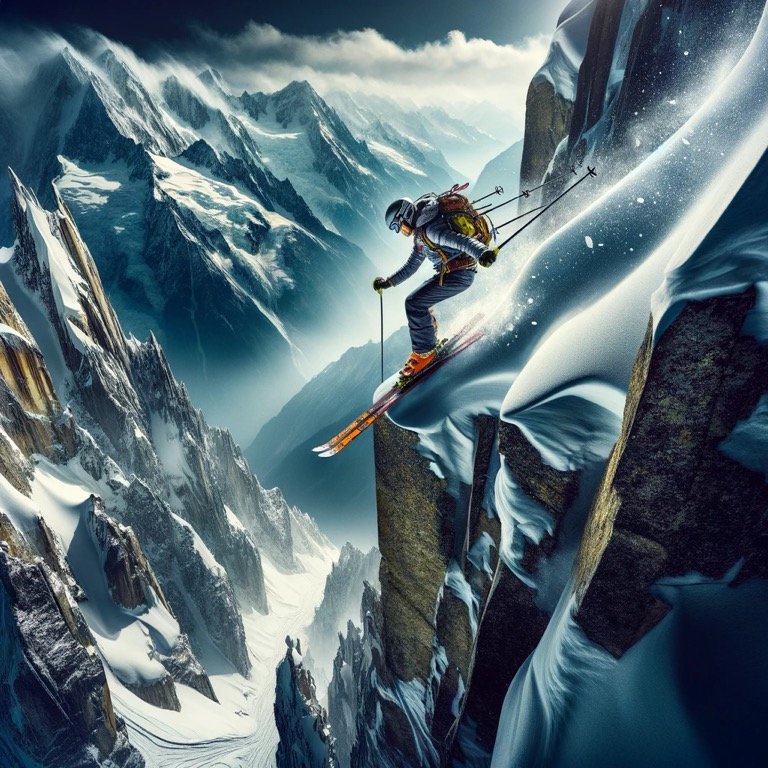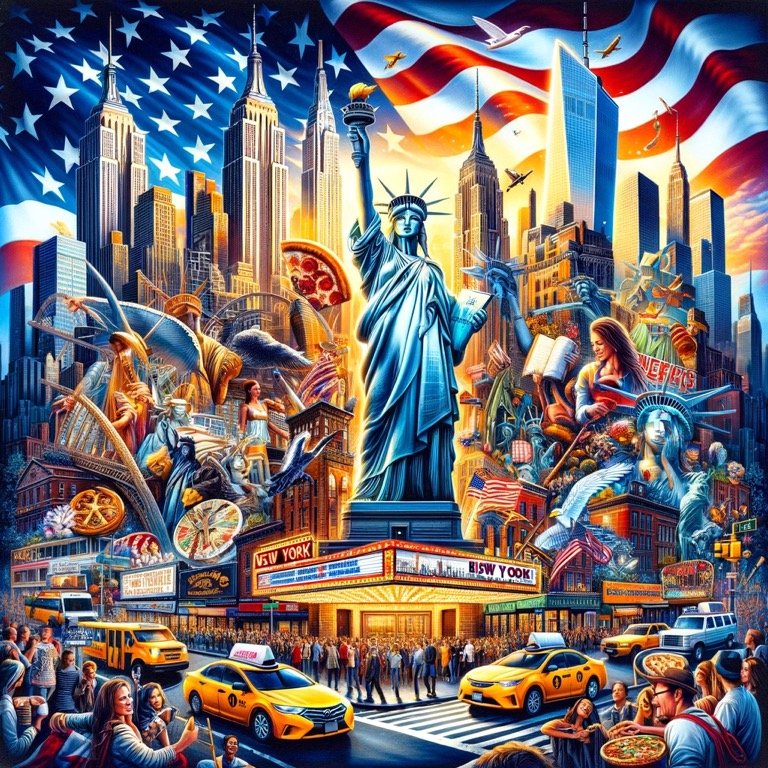The pursuit of crazy ideas is much needed In our current world of copy and paste.
How many times have we heard companies say they want to be like Apple…
They want to look like Apple.
They want to sound like Apple.
They want to be Apple.
What truly defines Apple and similar innovators isn't just aesthetics or branding. It's about a cultural mindset that embraces the unknown and outlandish ideas.
This ethos, captured in Apple's famous 1997 manifesto by Lee Clow, Rob Siltanen, and the TBWA\Chiat\Day team, intersects with 'crazy enough' thinking in innovation and leadership."
“Here's to the crazy ones. The misfits. The rebels. The troublemakers. The round pegs in the square holes. The ones who see things differently. They're not fond of rules. And they have no respect for the status quo. You can quote them, disagree with them, glorify or vilify them. About the only thing you can't do is ignore them. Because they change things. They push the human race forward. And while some may see them as the crazy ones, we see genius. Because the people who are crazy enough to think they can change the world, are the ones who do.”
It’s time to be Apple by being crazy enough to be different than Apple.
Visionary Narratives: Your Brand’s Identity in 2024
The most captivating brands transcend the ordinary; they don't merely conduct business – they weave authentic stories that embody their core identity and future ambitions in every narrative thread. Their success lies in a story deeply rooted in interconnectedness, ensuring that every aspect of the brand's evolution is thoroughly understood and embraced at every level, from the C-suite to the frontline. This synergy between internal culture and external branding is pivotal, acting as a multiplier and elevating the brand to new heights.
As we enter 2024, the brands that stand out are those embracing trends that align their internal values with impactful external narratives.
Here's how successful brands are weaving these trends into their stories:
Trend 1: Ethical Use of Data and Transparency
In an era where data privacy is paramount, DuckDuckGo sets a gold standard in trust, not just as a search engine but as a champion of user privacy. This approach is crucial for brands aiming to build trust through transparent and ethical data practices.
How It Could Look: A finance app's story focuses on revolutionizing personal finance with a staunch commitment to user privacy, changing how people interact with their money.
Trend 2: Interactive and Immersive Experiences
Oculus is redefining engagement by immersing users in virtual experiences that go beyond traditional marketing, signaling a shift towards more interactive and memorable brand interactions.
For Example: A retail brand creates an immersive VR shopping experience, allowing customers to try products in a virtual space, transforming the traditional shopping narrative.
Trend 3: Nostalgia Marketing with a Modern Twist
Levi’s combines nostalgia with sustainability, creating a narrative that bridges generations and connects a rich heritage with modern values. This blend is key for brands looking to evoke emotion while remaining contemporary.
For Example: A music streaming service reintroduces classic albums with enhanced modern sound quality, weaving stories of musical heritage with the latest audio technology.
Trend 4: Localizing Global Issues
Patagonia's narrative skillfully combines global environmental advocacy with local action, showcasing how brands can resonate both globally and locally by addressing pertinent issues.
For Example: A global beverage brand adapts its sustainability efforts to different locales, tailoring its environmental impact stories to various communities.
Trend 5: Mental Health and Wellness
Lululemon extends beyond fitness apparel to encompass mental wellness, reflecting a growing trend where brands are integrating mental health into their narratives and offerings.
For Example: A wellness brand focuses on products that support mental health, intertwining physical and mental well-being in their story. Dive deeper into mental health in branding
Trend 6: Embracing the Gig Economy
Lyft champions the gig economy lifestyle in their narrative, reflecting the growing trend of brands aligning with the flexibility and independence of modern workforce values.
For Example: A co-working space brand tells a story of creating dynamic environments for gig workers, emphasizing community and flexibility.
Trend 7: Blockchain for Brand Transparency
Everledger demonstrates how blockchain can build consumer trust, particularly in ensuring product authenticity and ethical sourcing, guiding brands towards more transparent practices.
For Example: A jewelry brand uses blockchain to trace the ethical sourcing of their materials, weaving a story of innovation and trust.
Trend 8: Mental Fitness and Cognitive Health
Headspace leads the way in promoting mental and cognitive well-being, reflecting a trend where brands focus on holistic health in their products and services.
For Example: A corporate wellness program incorporates initiatives to improve employee cognitive health, positioning itself as a leader in workplace mental fitness.
Trend 9: Hyper-Localized Content
Zomato excels in creating content that resonates with diverse local cultures, illustrating the importance of hyper-localization in global brand strategies.
For Example: A fashion brand crafts a story around designing collections inspired by sustainable local trends, celebrating global diversity in fashion.
Trend 10: Silent and Minimalist Branding
MUJI’s minimalist design and branding stand out in an information-saturated world, showing the power of subtlety in brand communication.
For Example: An electronics brand adopts a minimalist approach (like Nothing) in product design, telling a story that highlights the elegance and simplicity of their technology.
In 2024, these trends offer a pathway for brands to create narratives that resonate deeply with their audience, aligning internal vision with external messaging and forging a path to enduring success and relevance.
The Future of Work: 24 Trends Shaping the Workday in 2024
Buckle up, because the world of work is about to undergo a major transformation! From robots taking over your chores to the continuation of virtual colleagues joining your team from across the globe, the next few years will be filled with exciting and innovative changes.
Here are 24 key trends that are set to revolutionize your workday in 2024:
Tech Takeover:
1. AI Integration: Say goodbye to repetitive tasks and hello to your new AI teammate who'll handle scheduling meetings, crunching numbers, and much more.
Read more about the impact of AI in the workplace
2. Hyperautomation: Robots are joining the workforce, taking over manual labor and freeing up your time for more creative and strategic tasks.
Learn more about the rise of hyperautomation
3. Decentralized Work Platforms: Blockchain technology is opening up new possibilities for collaboration and project management, allowing you to work with anyone, anywhere, anytime.
Explore the potential of decentralized work platforms
4. The Metaverse for Work: Get ready for immersive virtual and augmented reality environments where you can collaborate, train, and even hold meetings with colleagues from around the world.
Discover the possibilities of the metaverse for work
5. Quantum Computing for Business: Brace yourself for a revolution in complex problem-solving and data analysis. Quantum computing will tackle previously unsolvable problems and accelerate innovation across various industries.
Read more about the potential of quantum computing in business:
Hybrid Work
Work-Life Remix:
6. The Rise of Remote Work: The daily commute is becoming a thing of the past as remote work continues to rise in popularity. Enjoy the flexibility and freedom of working from anywhere you choose.
Explore the benefits of remote work
7. Hybrid Work Model: Embrace the best of both worlds with the hybrid work model, which combines remote work with occasional in-person collaboration.
Discover the advantages of a hybrid work approach:
8. The Great Resignation Continues: People are prioritizing their well-being and career fulfillment, leading to increased job-hopping and pushing companies to offer better benefits and flexible work arrangements.
Learn more about the Great Resignation
9. The Gig Economy is Booming: Take control of your career with freelance and temporary work opportunities. The gig economy is booming, offering greater flexibility and autonomy to workers.
Explore the rise of the gig economy
10. Focus on Employee Well-being: Companies are prioritizing mental health support, flexible schedules, and wellness programs, recognizing that happy employees are productive employees.
Read more about the importance of employee well-being
Workforce Evolution:
11. Upskilling and Reskilling are Key: Stay competitive in the ever-changing job market by continuously learning and developing new skills. Discover the benefits of upskilling and reskilling: https://www.forbes.com/sites/forbescoachescouncil/2022/07/27/evolving-upskilling-and-reskilling-needs-three-tips-for-staying-ahead-of-the-curve/
12. The Rise of the Multigenerational Workforce: Managing a diverse workforce with different work styles and expectations requires inclusive leadership and a focus on creating a sense of belonging.
Learn more about managing a multigenerational workforce
13. Focus on Diversity, Equity, and Inclusion: Building an inclusive workplace where everyone feels valued and respected is a top priority for organizations.
Explore the importance of diversity, equity, and inclusion in the workplace
14. The Rise of the Creator Economy: Employees are leveraging their skills and knowledge to create and monetize their own content, leading to new career paths and entrepreneurial opportunities.
Discover the possibilities of the creator economy
Sustainability and Ethics:
15. Sustainable Work Practices: Companies are adopting sustainable practices like energy efficiency and waste reduction to protect the environment.
Read more about sustainable work practices
16. Focus on Ethical AI: Ensuring AI is developed and used responsibly is crucial to address concerns about bias and fairness.
Learn more about ethical AI
17. The Rise of Gamification: Work is getting a fun twist! Expect to see point systems, badges, and leaderboards incorporated into tasks and activities to boost engagement and motivation.
Link
18. Embracing Biophilic Design: Offices are becoming more nature-inspired, incorporating natural elements like plants, sunlight, and natural materials. This trend improves employee wellbeing, creativity, and productivity.
19. Wellness Wednesdays and Mindfulness Moments: Companies are prioritizing employee well-being by offering dedicated time for mental health and relaxation. This can include meditation sessions, yoga classes, or simply designated "unplug" time.
20. Experiential Learning and Unconventional Training: Forget traditional lectures and PowerPoints. Training is getting creative with immersive simulations, escape rooms, and role-playing scenarios to boost engagement and knowledge retention.
Link
21. Workplace Hackathons and Innovation Days: Unleash your creativity and problem-solving skills through hackathons and innovation days dedicated to collaboration and rapid prototyping.
Link
22. The Rise of the Fractional C-Suite: Get access to top-tier leadership on a part-time or project basis, without the full-time commitment.
Link
23. Gamified Performance Reviews: Performance reviews are getting a makeover with interactive elements, real-time feedback, and self-assessment tools to make them more engaging and transparent.
24. Focus on the Human-Machine Collaboration: As technology advances, the focus will shift towards understanding how humans and machines can best work together to achieve optimal results. This will involve developing new skills and strategies for collaboration, communication, and trust-building.
These 24 trends paint a vivid picture of the dynamic and exciting future of work. With technology evolving at an unprecedented pace, workplaces are transforming to become more flexible, diverse, sustainable, and, yes, even fun! As we move into 2024, buckle up and embrace the exciting opportunities that arise from this transformative era. The future of work is here, and it's time to make it work for everyone.
"Balancing Creativity and Ethics: The Evolving Landscape of AI Image Generation."
In the ever-evolving domain of AI image generation, particularly with the latest advancements in ChatGPT's Dalle-4 and Google's Gemini, the landscape of visual expression is undergoing a seismic shift. This intersection where creator and creation blend has given rise to a new era in digital artistry, brimming with possibilities yet anchored in a framework of ethical and societal values.
The introduction of strict ethical guidelines in AI image creation is a testament to the importance of aligning technological innovation with moral responsibility. These guidelines prohibit the production of images depicting real individuals, copyrighted characters, offensive or inappropriate content, identifiable text or elements, and copyrighted logos or trademarks. Such measures are vital in maintaining the integrity of AI technology and ensuring it serves the greater societal good.
Particularly significant is the stance against offensive and inappropriate content, encompassing a broad spectrum from explicit images to hate speech and discrimination. This policy aims to foster a safe, respectful environment for all users. Similarly, understanding and avoiding harmful stereotypes requires a nuanced approach that considers historical contexts, cultural sensitivity, and the impact of stereotypes, regardless of intent.
In practical terms, these guidelines influence the types of images AI can produce, ensuring that the content is diverse, respectful, and contextually sensitive. Whether it's avoiding harmful themes or balancing creativity with responsibility, AI's approach to image generation is governed by a commitment to ethical standards and inclusivity.
Amidst these guidelines, AI's capabilities in image generation are expansive. To illustrate, here are ten types of images that AI can create, each with a specific prompt, demonstrating the balance between practical utility and creative expression:
Practical Image Types:
Educational Illustrations
Prompt: "Create an image depicting the solar system with accurate planet positions and labels for a science textbook."
Architectural Renderings
Prompt: "Generate a 3D rendering of a sustainable, modern office building set in an urban environment."
Fashion Design Sketches
Prompt: "Illustrate a collection of eco-friendly, urban-inspired clothing designs for a fashion catalog."
Medical Diagrams
Prompt: "Create a detailed, anatomically correct illustration of the human heart for a medical educational resource."
Culinary Presentations
Prompt: "Design an image of a gourmet vegan meal, artistically plated, for a cookbook cover."
Creative Image Types:
Fantasy Landscapes
Prompt: "Generate an image of a mystical forest with glowing plants and a waterfall under a starlit sky."
Science Fiction Cityscapes
Prompt: "Create a futuristic cityscape with hovering cars, towering skyscrapers, and neon lights for a sci-fi story."
Surreal Art Creations
Prompt: "Illustrate a surreal scene where the ocean merges with the sky, and fish swim among the clouds."
Historical Reimaginings
Prompt: "Depict a scene from ancient Rome with a modern twist, blending historical architecture with contemporary technology."
Mythical Creature Designs
Prompt: "Design an image of a mythical creature, a blend of a dragon and a phoenix, in a mystical landscape."
These examples underscore the versatility and depth of AI in image generation, from practical, educational tools to imaginative, creative artworks. They reflect the potential of AI to not only push the frontiers of creativity but also to do so within the boundaries of responsible and ethical use. This journey of innovation, carefully navigated through ethical considerations, highlights the power of AI as a tool for both practical application and creative exploration, ensuring that it aligns with and respects societal values and standards.
"The Future in Motion: Top 5 AI Video Content Tools of 2023 and Their Societal Impact"
In 2023, the landscape of video content creation is being dramatically reshaped by AI, with tools that offer groundbreaking capabilities. These advancements, however, come with significant societal implications. This post will explore the top 5 AI video content tools, examining their impact on creativity, societal narratives, and the ethical dilemmas they pose.
1. Adobe Premiere Pro - Adobe Premiere Pro, known for professional editing features, now integrates AI for automatic scene detection and custom captions.
Example: Its AI capabilities have been pivotal in documentary filmmaking, enabling automatic transcription and captioning of extensive interviews, thereby expediting the editing process.
2. Topaz Video AI - Topaz Video AI excels in motion interpolation and detail recovery, making it ideal for upscaling and remastering.
Impact: Film restoration experts have used it to upgrade classic movies to 4K, revitalizing old content for modern audiences.
3. Filmora - Filmora, with its AI copywriting and preset templates, is perfect for beginners and social media influencers.
Example: Social media influencers frequently use Filmora for quick content creation, making video production more accessible.
4. Synthesia - Synthesia is renowned for AI avatars and text-to-video transformations, with significant creative and ethical implications.
Impact: Educational platforms utilize Synthesia for multilingual content, but the tool's potential for creating misleading political deepfakes is concerning.
5. Runway.ml - Runway.ml offers a suite of AI-powered video editing solutions, enhancing the capabilities of independent filmmakers.
Example: Independent filmmakers use Runway.ml for advanced features like object removal and automatic subtitles, enabling professional productions on tight budgets.
Societal Impact and Examples
The societal impact of these AI video tools is profound. Synthesia, for instance, was used to create a deepfake of Ukrainian President Volodymyr Zelensky, which was quickly identified but highlighted the potential for geopolitical misuse. Similarly, a deepfake of Tom Cruise on social media demonstrated the technology's realism, raising concerns about its potential for creating convincing misinformation.
These tools have also been used for creative and beneficial purposes. For example, Adobe Premiere Pro's AI features have been employed in educational content creation, making complex topics more engaging and accessible.
Ethical Considerations
The ethical considerations surrounding these tools are significant. The ease of creating realistic deepfakes poses a threat to the integrity of information and personal identity. As these technologies become more sophisticated, distinguishing between real and AI-generated content will become increasingly challenging, underscoring the need for regulations and ethical guidelines.
Conclusion
The top 5 AI video content tools of 2023 demonstrate both the immense potential and challenges of AI in video production. While they enable unparalleled creativity and efficiency, their impact on society, politics, and ethics cannot be overlooked. As we continue to harness these tools' capabilities, it's imperative to navigate their use responsibly and ethically, ensuring they contribute positively to society.
Top 9 Ai Image Generators And The Future of AI Image Generation
The landscape of AI image generation is a vivid tapestry of innovation and creativity, evolving rapidly and reshaping the realms of art, marketing, and technology. These tools, each unique in their capabilities, are not just revolutionizing digital art but are also influencing the future trajectory of content creation and artistic expression. In this exploration, I'll introduce you to the top AI image generators, delving into their distinctive features and potential future developments.
1. Midjourney - Known for its versatility in emulating specific artistic styles and refining images, Midjourney is a standout for its adaptability. It enables users to create unique artworks, though concerns about originality and public access to generated content persist.
2. PlaygroundAI - PlaygroundAI is celebrated for its user-friendly interface and diverse filters. It caters well to both beginners and seasoned professionals, offering powerful image editing capabilities with a need for detailed prompts for high-quality results.
3. Canva AI - Leveraging open-source technology, Canva AI offers simplicity and efficiency. It's particularly adept in art style selection and photo editing, serving a broad user base from professional designers to social media agencies.
4. Stable Diffusion - Known for producing lifelike, high-quality images, Stable Diffusion represents the rapid advancements in AI image generation, capable of creating realistic and detailed artworks.
5. DeepAI - DeepAI, recognized for its customization capabilities, allows for the creation of highly personalized images, opening new avenues for bespoke visual content.
6. NightCafe - NightCafe is praised for its ability to produce complex and artistically rich images, offering a platform for users to experiment with various styles and techniques.
7. Runway ML - This platform is renowned for its versatility, especially in video editing. It provides a range of creative models and is a valuable tool for both still and moving images.
8. DALL-E 2 (OpenAI) - DALL-E 2 (used for images in this post) has garnered attention for generating highly realistic images from textual descriptions, excelling in conceptual art and synthetic imagery.
9. Fotor AI Image Generators - Fotor's AI image generators are known for their speed and intelligence in processing prompts, producing high-quality photos for artistic and commercial use.
The Future of AI Image Generation
Looking ahead, the future of AI image generation is set to be more impactful and nuanced. We can anticipate tools that produce images aligning closely with human creativity, featuring more intuitive interfaces for broader accessibility.
Implications for Artists and Creators
For artists and content creators, these advancements offer both opportunities and challenges. While AI image generators can enhance creativity and efficiency, they also raise questions about the uniqueness of human-generated art. Integrating these tools while maintaining an individual artistic voice will be key.
The Emergence of Extreme and Imaginative AI Art
The trend of creating extreme and imaginative AI art is burgeoning, enabling the visualization of fantastical and surreal artworks. However, achieving the nuanced understanding and emotional depth of human art remains a challenge for AI.
These are some images I created using extreme prompts connected to situations, politics, and patriotism:
Ethical Considerations
As AI image generators grow in capability, ethical considerations become increasingly important. The balance between creative freedom and societal norms is a delicate one, necessitating thoughtful engagement with these technologies.
In conclusion, AI image generators like NightCafe, DeepAI, Runway ML, DALL-E 2, and Fotor, among others, are redefining visual creation. They present both a remarkable opportunity and a responsibility for artists and creators to innovate while upholding artistic integrity and societal values. As we embrace these tools' potential, we must also be mindful of their ethical, stereotypical, and societal implications, ensuring a future of AI-generated imagery that is not only groundbreaking but also responsible and respectful.
"Navigating the Future: The Ethical Crossroads of AI's 'Q*' Revolution"
OpenAI's rumored "Q*" algorithm, potentially a significant step towards Artificial General Intelligence (AGI), embodies a thrilling yet sobering frontier in AI's evolution. Its capacity to transform fields like autonomous driving and medical diagnostics is immense, yet it concurrently stirs deep concerns about AI's broader impact on humanity. This duality necessitates a well-calibrated approach, blending optimism with stringent ethical vigilance.
For instance, consider the implications in healthcare: AI could personalize treatment plans, but there's also the fear of misdiagnosis due to algorithmic errors. Ethical AI practices are paramount here, ensuring that systems are transparent, unbiased, and, most importantly, understandable to clinicians and patients alike. Collaboration between governments, tech companies, and ethical bodies is crucial in formulating guidelines that ensure AI is a tool for enhancement, not detriment.
In autonomous driving, the stakes are similarly high. AI promises safer roads and reduced human error, but the thought of ceding control to a machine can be unsettling. Here, the focus on ethical AI involves rigorous safety standards and public trust-building measures.
As we stand at this pivotal moment in AI development, it's essential to recognize that our journey is not just about technological milestones but about crafting a future where innovation and responsibility coexist. This journey is deeply personal, touching every aspect of our lives from health to safety, demanding our collective wisdom to navigate. We're not just engineering algorithms; we're sculpting the contours of a future where technology amplifies human potential and upholds our shared values, steering us towards a more enlightened, inclusive tomorrow.







